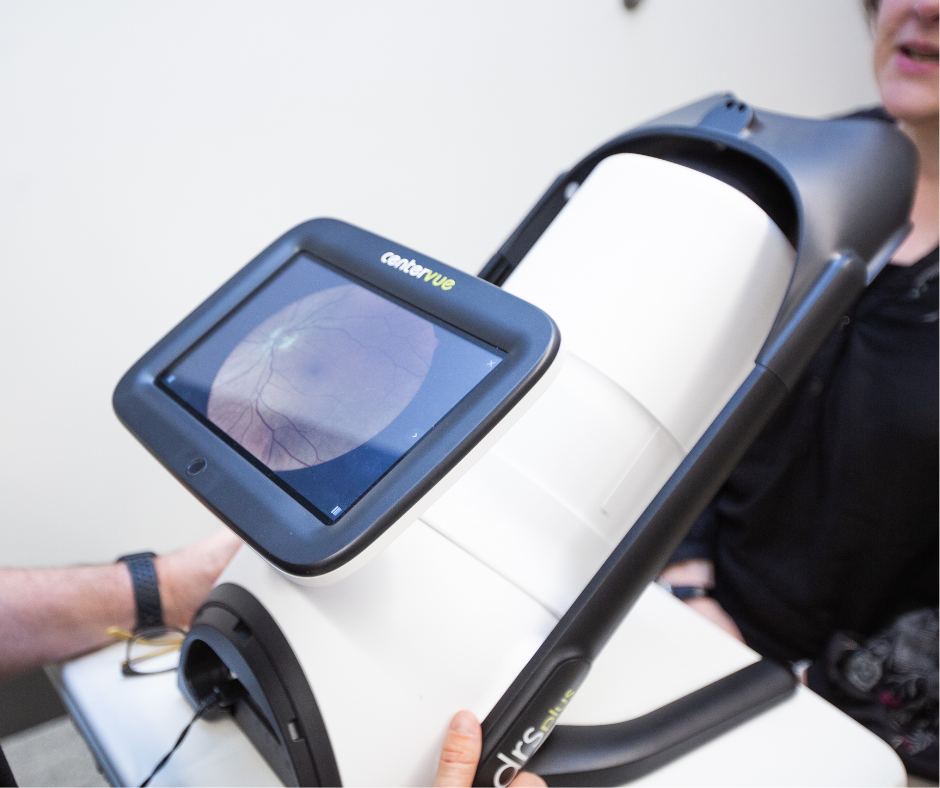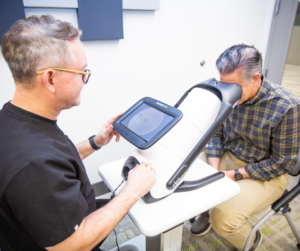How Will Artificial Intelligence Eye Care Impact Your Practice?

Artificial intelligence (AI) has become an increasingly popular tool in various industries recently, and healthcare is no exception. With AI, healthcare professionals will have access to new insights and tools that have the potential to improve healthcare workflows. One area of practice that will potentially feel the impact of AI the most is eye care. Let’s further examine artificial intelligence eye care and the potential impacts it will have on healthcare professionals diagnosing and treating people in various patient populations.
What is Artificial Intelligence?
Artificial intelligence refers to the simulation of cognitive functions, such as learning and problem-solving, with computers. AI systems analyze large amounts of data, identify patterns, and make predictions based on the patterns that they have identified. Within AI, two other classifications are commonly misconstrued: Machine learning (ML) and Deep learning (DL).

Machine learning involves training algorithms to improve their accuracy over time as they process more data. Machine learning requires copious amounts of code, which makes it more difficult to implement on a larger scale.
Deep learning goes even deeper into machine learning, hence the name. Deep learning uses artificial neural networks based on the structure of the human brain to analyze vast amounts of data, making it easier for processes like machine learning to improve.
Because AI improves upon itself, the uses of the technology will continue to expand as time goes on. However, artificial intelligence eye care is still used in its current state.
Current Uses of Artificial Intelligence Eye Care
Currently, AI in eye care is being used to improve medical practices. Some of the most common uses include:
Diabetic Retinopathy Detection
Diabetic retinopathy is a complication of diabetes that affects the blood vessels in the retina. If not treated early, this condition can cause vision loss or even blindness in patients. AI, however, has started to be used alongside medical professionals to determine whether someone has the early signs of diabetic retinopathy. Artificial intelligence eye care will continue to improve as long as deep learning evolves. However, it does still have its limitations and will require human oversight for the foreseeable future, as we will discuss further on.

Glaucoma Diagnosis
In addition, AI is being used to detect signs of glaucoma. Glaucoma, like diabetic retinopathy, is a group of eye conditions that can cause blindness if not detected and treated early. With fundus photography and optic nerve images, AI has been used to identify signs of glaucoma, enabling early diagnosis and treatment.
Potential Uses of Artificial Intelligence Eye Care
As far as potential uses of artificial intelligence eye care, the possibilities are limitless.
More Efficient Diagnoses
With the continuous improvement of technology in healthcare, “artificial intelligence eye care will enable the screening of ophthalmic diseases at a more efficient scale,” says Dr. Alvin Liu, Assistant Professor of Ophthalmology at Johns Hopkins Medicine Wilmer Eye Institute. Rather than waiting on a retina specialist to diagnose someone for an ophthalmic disease in the future, AI will automatically make a diagnosis without human intervention, making it easier for medical professionals to take time treating patients rather than diagnosing them.
Limitations of Artificial Intelligence Eye Care
While AI eye care will improve significantly as time progresses, there are still some limitations.
Lack of Data
AI algorithms rely on vast amounts of data, known as big data, to make accurate predictions. In some cases, there may not be enough data available to train AI algorithms effectively, which can lead to inaccurate predictions and potentially harmful treatments. For example, if an AI algorithm is trained to detect diabetic retinopathy, but there is not enough data available for it to learn what a healthy retina looks like, it may incorrectly identify a healthy retina as diseased, leading to unnecessary treatment. Therefore, for the development and deployment of accurate artificial intelligent eye care, high-quality data is essential.

Bias
AI algorithms can be biased if the data used to train them is too. For example, if an AI algorithm is trained on data that disproportionately represents a certain demographic, it may not perform as well on patients from other demographics. This can lead to inaccurate predictions and potentially harmful treatments. Bias can also arise in the development of AI algorithms if the designers have their own implicit biases that influence the algorithm’s decision-making. Therefore, it is important to ensure that AI algorithms are trained on diverse and representative datasets and that the designers of the algorithms are aware of their own biases and take steps to mitigate them.
What’s Next for Artificial Intelligence Eye Care?
AI has the potential to revolutionize eye care practice, from improving diagnosis and treatment accuracy to developing new treatments for previously untreatable conditions. However, it is not at that stage yet, so it is crucial to ask how to improve eye care treatment in its present state, including detecting early signs of diabetic retinopathy.
There are over 93 million people in the world with diabetic retinopathy. However, IRIS is leading the way in fighting this disease. With the IRIS Solution, medical professionals from the IRIS Reading Center are working hard to diagnose diabetic retinopathy early, reducing the risk of sight loss in diabetic patients by 90%. If you want to take part in the fight against preventable blindness, contact us to get a free demo and see what the IRIS Solution can do for you.
FAQs
How Is AI Used in Eye Care Technology?
AI is increasingly being used in eye care technology to enhance the diagnosis, treatment, and management of various eye conditions. Some applications of artificial intelligence eye care technology include disease detection and diagnosis, screening and monitoring, personalized treatment plans, surgical assistance, telemedicine and remote consultations, virtual reality and augmented reality, and drug development.
Can AI Detect Eyes?
Yes, AI can detect eyes in images and videos using computer vision algorithms. These algorithms are designed to recognize patterns and features in visual data, enabling them to identify and locate specific objects, such as human eyes.
How Does AI Help Blindness?
AI can help address blindness and vision impairment in various ways, including:
- Early detection and diagnosis of degenerative diseases
- Personalized treatment based on specific patient needs
- Assistive technologies including smart glasses, text-to-speech capabilities, and object recognition software.
- Rehabilitation and training
- Drug development
SM# 145, Rev A
Get started with IRIS today.
Want to know if IRIS is right for you? Schedule a one-on-one consultation with our team. We’re here to help.